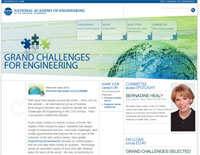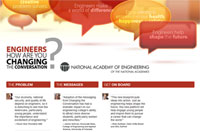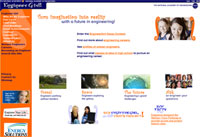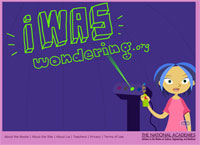On the National Assessment of Educational Progress 2009 Science Report Card released last Tuesday, the United States received an overall grade of “needs improvement.” The test, which measures science proficiency, was administered to 4th, 8th, and 12th graders and underscores one of the major focal points of President Obama’s State of the Union address: the need to improve science education in the United States. Four in ten 12th grade students did not perform even at a basic level of science understanding, and only about a fifth were judged to be proficient in science, with just 1% performing at an advanced level. Furthermore, there is still a strong gap in the achievement of students based on ethnicity, educational attainment of parents and caregivers, and family income. The National Research Council’s Board on Science Education has produced a number of reports that discuss research and provide practical guidance to improve science education. We asked Tom Keller, Senior Program Officer with the board, for his thoughts.
“There has not been such momentum in science education in this country since the 1960s, and in contrast to the times when the nation responded to the Sputnik shock, we now know much more about effective science learning and teaching. Foundational work has been and is underway in the National Academies’ Board on Science Education (BOSE) that summarizes the enormous progress we have made through learning and education research over the last 20 years. BOSE published two seminal studies and their derivative products in two major areas of science learning: K-8 in schools, and the whole area of out-of-school or informal science learning. The report on learning science in K-8 classrooms, Taking Science to School: Learning and Teaching Science in Grades K-8, and the associated practitioner volume Ready, Set SCIENCE!: Putting Research to Work in K-8 Science Classrooms have become important resources for classroom-based science teaching. The two reports on learning science in informal environments, Learning Science in Informal Environments: People, Places, and Pursuits, and its practitioner volume Surrounded by Science: Learning Science in Informal Environments are beginning to influence how museums, science centers, zoos and aquariums, and other institutions of informal learning think about their products for their public. Taking Science to School cites the research evidence and builds the case for the teaching and learning of more rigorous content than has been the usual. And proficiency has been defined as encompassing four strands of scientific proficiency – understanding scientific explanations, generating scientific evidence, reflecting on scientific knowledge and participating productively in science. Science is not just a body of facts; it is what you know, how you use that knowledge and how that knowledge helps you understand the world. The reports on informal learning expanded on these four strands of science proficiency by acknowledging more specifically the role of interest and motivation, and by addressing the crucial role of identity as a science learner.
“A number of factors are converging, leading to an unprecedented effort in science and STEM (Science, Technology, Engineering and Mathematics) education. Just recently, the Carnegie Corporation and the Institute for Advanced Studies released the Opportunity Equation, which lays out a framework for aligning the entire science education enterprise. The Council of Chief State School Officers and the National Governors Association led the creation of the Common Core State Standards Initiative in English language arts and mathematics. The president initiated the Race to the Top education reform efforts, Educate to Innovate, and Change the Equation. The President’s Council of Advisors in Science and Technology and the National Science Board each put forth their reports on K-12 science education. The National Academy of Sciences/National Research Council is currently finalizing a framework for next generation science standards and is working in a unique partnership with AAAS, NSTA, and Achieve on the framework and standards.”
National Research Council publications can certainly inform discussions and promote science education to move us from a “needs improvement” category to “clearly outstanding,” though it will take effort throughout the entire education system to get us there.
 |
Taking Science to School: Learning and Teaching Science in Grades K-8
What is science for a child? How do children learn about science and how to do science? Drawing on a vast array of work from neuroscience to classroom observation, Taking Science to School provides a comprehensive picture of what we know about…

|
 |
Ready, Set, SCIENCE!: Putting Research to Work in K-8 Science Classrooms
What types of instructional experiences help K-8 students learn science with understanding? What do science educators teachers, teacher leaders, science specialists, professional development staff, curriculum designers, school administrators need to know to…

|
 |
Learning Science in Informal Environments: People, Places, and Pursuits
Informal science is a burgeoning field that operates across a broad range of venues and envisages learning outcomes for individuals, schools, families, and society. The evidence base that describes informal science, its promise, and effects is informed by a…

|
 |
Surrounded by Science: Learning Science in Informal Environments
Practitioners in informal science settings–museums, after-school programs, science and technology centers, media enterprises, libraries, aquariums, zoos, and botanical gardens–are interested in finding out what learning looks like, how to measure it, and…

|
 |
Learning Science Through Computer Games and Simulations
At a time when scientific and technological competence is vital to the nation’s future, the weak performance of U.S. students in science reflects the uneven quality of current science education. Although young children come to school with innate…

|
 |
Exploring the Intersection of Science Education and 21st Century Skills: A Workshop Summary
An emerging body of research suggests that a set of broad “21st century skills”–such as adaptability, complex communication skills, and the ability to solve non-routine problems–are valuable across a wide range of jobs in the national economy. However, the…

|
 |
Nurturing and Sustaining Effective Programs in Science Education for Grades K-8: Building a Village in California: Summary of a Convocation
K-8 science education in California (as in many other parts of the country) is in a state of crisis. K-8 students in California spend too little time studying science, many of their teachers are not well prepared in the subject, and the support system for…

|
 |
Engineering in K-12 Education: Understanding the Status and Improving the Prospects
Engineering education in K-12 classrooms is a small but growing phenomenon that may have implications for engineering and also for the other “STEM” subjects–science, technology, and mathematics. Specifically, engineering education may improve student…

|
 |
Science, Evolution, and Creationism
How did life evolve on Earth? The answer to this question can help us understand our past and prepare for our future. Although evolution provides credible and reliable answers, polls show that many people turn away from science, seeking other explanations with…

|
 |
America’s Lab Report: Investigations in High School Science
Laboratory experiences as a part of most U.S. high science curricula have
been taken for granted for decades, but they have rarely been carefully
examined. What do they contribute to science learning? What can they
contribute to science learning? What is the…

|
 |
How Students Learn: Science in the Classroom
How Students Learn: Science in the Classroom builds on the discoveries detailed in the best-selling How People Learn. Now these findings are presented in a way that teachers can use immediately, to revitalize their work in the classroom for even…

|
 |
How People Learn: Brain, Mind, Experience, and School: Expanded Edition
This popular trade book, originally released in hardcover in the Spring of 1999, has been newly expanded to show how the theories and insights from the original book can translate into actions and practice, now making a real connection between classroom…

|


















































